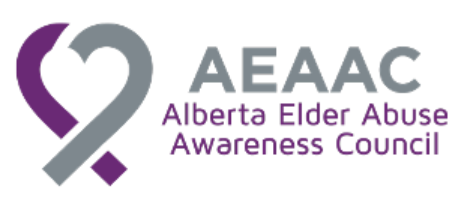- Details
- Published: 01 April 2022
The House of Commons Standing Committee on the Status of Women is currently conducting a study on intimate and domestic violence in Canada. CNPEA submitted a brief, in collaboration with the Centre for Research and Education on Violence Against Women and Children (CREVAWC).
We emphasized the additional barriers and challenges that older women experience, due to ageism and the ensuing lack of availability of specialized policies and services. We recommended a holistic approach, buidling bridges between the sectors of elder abuse and violence against women prevention and diverse communities in Canada to better respond to the unique needs of older women experiencing intimate partner violence.
You can access our brief as well the 63 other briefs submitted by individuals and organizations, on the Standing Committee on the Status of Women’s website.
The Canadian Network for the Prevention of Elder Abuse (CNPEA) is a pan Canadian network supported by leaders in aging, research, health care, and elder abuse prevention and response, among others. CNPEA connects people and organizations, fosters the exchange of reliable information, and advances program and policy development on issues related to preventing the abuse of older people. We do this work at the local, regional, provincial/territorial, and national levels through our knowledge-sharing hub: www.cnpea.ca. CNPEA has led a wide range of collaborative projects addressing ageism and elder abuse, including the development of a pan-Canadian engagement strategy, Future Us: A Roadmap to Elder Abuse Prevention, launching in March 2022, in partnership with the Centre for Research and Education on Violence Against Women and Children, Western University in Ontario.
Recommendation: Build bridges between elder abuse, the violence against women sectors and diverse communities in Canada to respond to the unique needs of older women experiencing intimate partner violence.
Rationale: The Gender-Based Violence National Action Plan led by WAGE is mostly silent on older women, signifying the pervasiveness and continuing invisibility of ageism as a form of structural violence at a societal level. Older women remain caught between sectors, in the margins of pressing social issues of elder abuse and violence against women (VAW). The elder abuse sector does not have a history of gender or intersectional analysis and rarely considers coercive power dynamics in intimate partner relationships. Elder abuse literature typically does not single out older women as a separate group nor recognize their unique vulnerabilities. “Domestic violence grown old” is a common phrase, and a rationalization for ignoring the issue, in the sense that the problem is longstanding and there is nothing to be done about it now. The VAW sector has traditionally focused on younger women and children. Consequently, the unique needs of older women have not been considered at policy or funding levels in responding to gender-based violence.[1]
After a lifetime of systemic sex-based discrimination that manifests in the gender wage gap, precarious and unpaid care work, too many older women find themselves without pensions or benefits, dependent on abusive partners and government subsidies with an ever-diminishing horizon. There are few shelters or transition housing options for those fleeing violence.[2] A 2015 prevalence study on elder abuse in Canada found that just being female is a significant risk factor.[3] Overlapping oppressions for Indigenous, racialized, newcomer, LGBTQ and older women living with disabilities show up as over-representation in poverty and violence rates.
The myth that older couples do not experience intimate partner violence persists. This, despite reports by the Canadian Femicide Observatory in 2020 that the largest proportion (19%) of femicides involved victims who were between the ages of 55 to 64 years of age. Women over 65 made up another 11% of victims. As the population ages, there is a growing urgency to recognize and respond to the unique needs of older women who are trapped by the system in abusive relationships and households.
As a national network, CNPEA is well-placed to build relationships between the sectors and jurisdictions, and to collaborate with diverse communities to work toward cultural integration at a multi-cultural system level. We have long-standing relationships with provincial-territorial elder abuse prevention networks and with VAW networks and coalitions across Canada. We are committed to advancing an equity agenda that recognizes the need for differentiated, respectful, and inclusive responses to violence against older women.
On March 24, 2022, CNPEA will launch Future Us: A Roadmap to Elder Abuse Prevention. The strategy was developed in partnership with Western University as well as other nationally based organizations and in consultation with networks and advocates in each province and territory. It is a pan-Canadian engagement strategy with three overarching goals:
- Prioritize prevention of elder abuse and neglect in every community
- Establish and support elder abuse prevention networks at local, regional, and national levels.
- Teach everyone to recognize warning signs of abuse and neglect, how to respond safely and effectively and where to refer in the community to find help.
Future Us has been created to engage citizens, organizations, communities, and governments. Everyone has a role to play – they just need to know the options and opportunities to contribute. Advancing this recommendation to include older women in the GBV National Action Plan is a pivotal role that the Standing Committee on the Status of Women can play.
Further, CNPEA is a national network without annualized funding. To date, we are operating solely on project funding. Should the Standing Committee find merit in our recommendation, we would respectfully ask to be considered for annualized funding that would allow us to do the lasting work that holds a dedicated focus on older women who are victims of gender-based violence.
Thank you for your consideration.
[1] MacPherson, M., Reif, K., Titterness, A., MacQuarrie, B. (2020). Older Women and Domestic Homicide. In P. Jaffe, K. Scott, A. Straatman (Ed.), Preventing Domestic Homicides: Lessons Learned from Tragedies. (pp 15-37). Cambridge: Elsevier Academic Press.
[2] See the Atira report Promising Practices in Canada for Women Who Are Older and Fleeing Abuse (2015) for recommendations relating to housing.
[3] National Institute for the Care of the Elderly, (2015). Into the Light: National survey on the mistreatment of older adults.

















